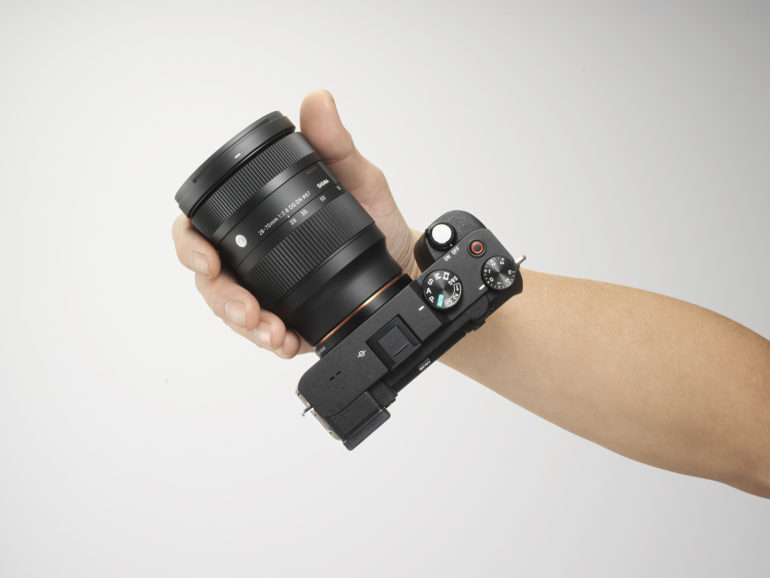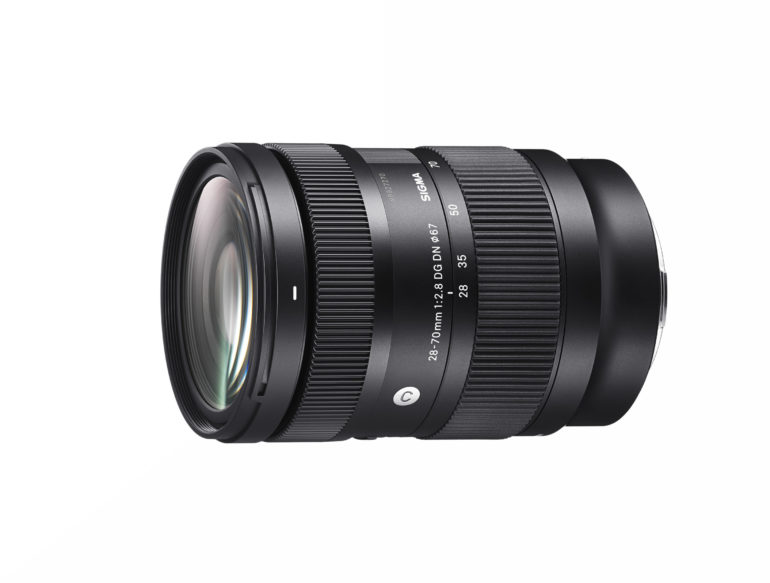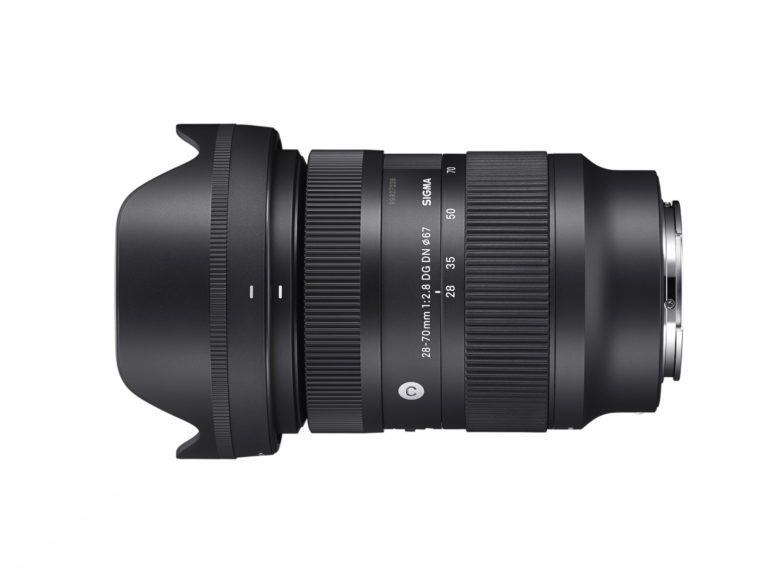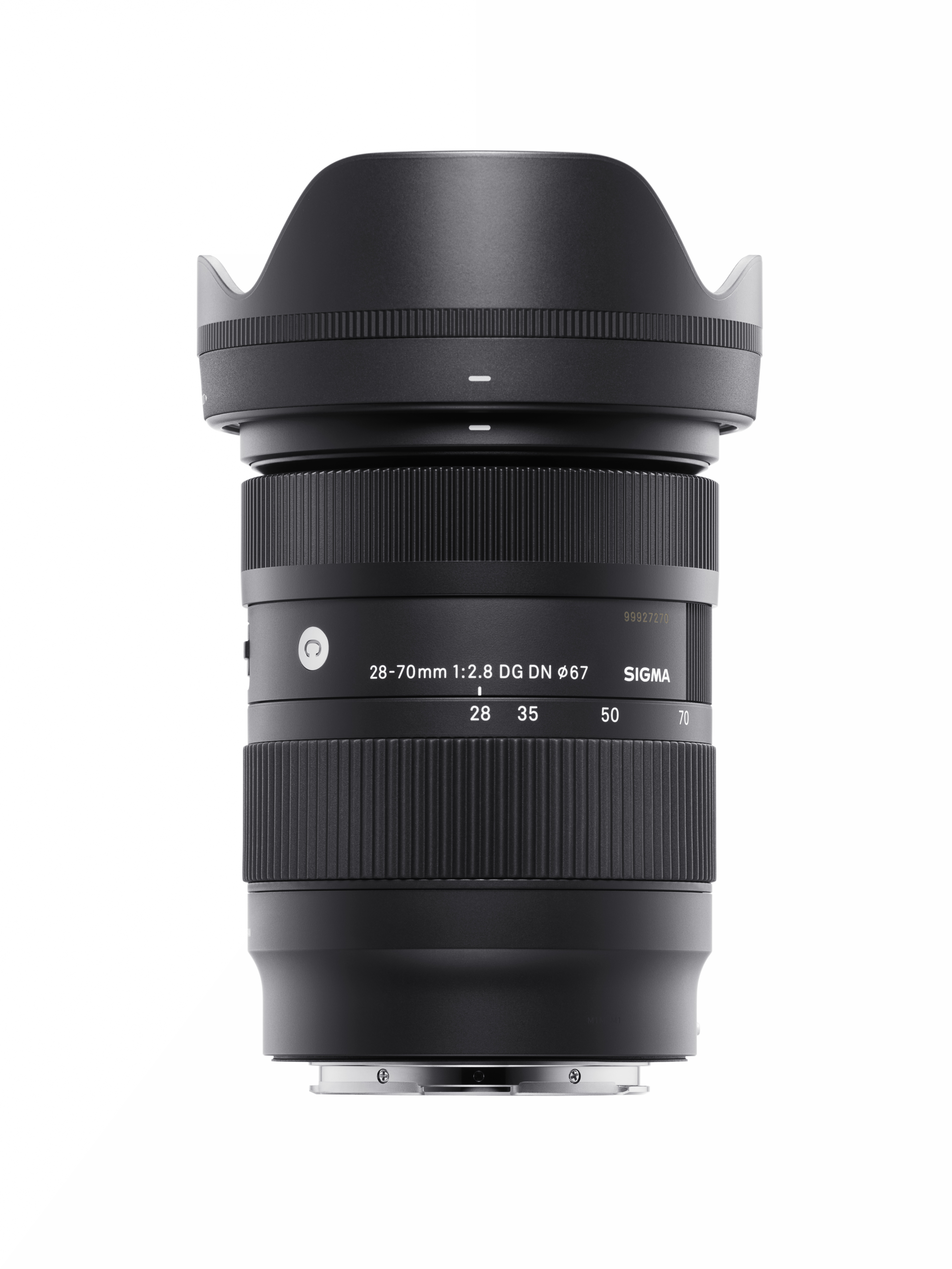Why did Sigma announce the Sigma 28-70mm F2.8 DG DN Contemporary lens?
Sigma is a company that makes some questionable choices. We’ll never discount their image quality. But the rest of the package is just always odd. Take the new Sigma 28-70mm f2.8 DG DN Contemporary. For the most part, they say it’s an Art series lens. But the big differences are with the build quality and the focal range. The Sigma 24-70mm f2.8 DG DN Art is around double the weight. We really liked that lens and gave it a five-star review. But the Sigma 28-70mm F2.8 DG DN Contemporary is claiming similar image quality performance for a few hundred bucks less at $899. To me, it seems like a diet Art lens. And in the grand scheme, we wonder if it’s a disposable option.
Sigma 28-70mm f2.8 DG DN Contemporary Tech Specs

- 28-70mm full-frame coverage
- Constant f2.8 aperture throughout the range
- 16.6 ounces (just over 1 pound)
- Two FLD elements
- Two SLD elements
- Art level optical performance
- Dust and splash-proof mount with water and oil-repellent front element
- Thermally stable composite
- No zoom lock switch
- No dedicated AF-L button
- 67mm filter thread vs 82mm on the Art version
- Much smaller than the Art version
- 9 Aperture blades
- Close focusing distance of 2.8 inches vs the Art version at 0.6 feet
- Stepping autofocus motor
- Available for E and L mount
- On Sony, you need to turn on the optical correction.
- $899 available in early March 2021
On the Life Span of Lenses
Some of the best thoughts come to me when I talk to the rest of The Phoblographer staff. Brett, Dan, Hillary, and Mark are incredibly intelligent. A conversation I had with Brett really struck me. “Man, I remember when those things used to cost a whole lot more and lasted you a long time,” Brett said to me in a phone call. And that’s what stuck out at me.
Why would Sigma make the 28-70mm f2.8 DG DN Contemporary? And why would they make it so cheap? Well, part of that is technology: Megapixel counts just keep going up.

My conversation with Brett brought me back to an article I worked on years ago about a lens’s lifespan. All the manufacturers, including Sigma, said that the decade-long lifespan of a lens is gone. Here’s a critical quote from that article:
“Compared to the time when sensor resolution is lower, the life of the lenses will be shorter. When the resolution was lower, the lens performance difference was not as noticeable.” states Sigma CEO Kazuto Yamaki. “The higher the resolution, the easier the customers can tell the difference in the lens performance. This could be the driving force behind the shorter life span of modern lenses. Seeing this noticeable difference in lens performance may drive the customers to upgrade.”
So, to be honest, we can’t complain about the Sigma 28-70mm f2.8 DG DN Contemporary if this is the strategy. It’s probably not the best solution in the long run, but it’s working for Sigma. But Mr. Yamaki also made another interesting point:
“Sometimes, your favorite lens may not be sharpest or best performing lens, but its images stands out to you. Customers may like the lens because of its special ‘taste.’ It’s not as simple as camera resolution. That’s why the lens is so interesting.”
He’s right! And ultimately, I think this is a good choice for Sigma. They finally made something very lightweight. I reviewed the 24-70mm Art lens and talked about needing to do yoga stretches. Where I feel Sigma is lacking is fully weather sealing the lens. They’d probably say that you can’t have both. And I’d tell them to look at Tamron.
The point here is that these lenses are very cheap in a financial sense. But they’re probably also not meant to last you a long time. I gave away my old Sigma 35mm f1.4 Art lens to my cousin. When it was announced in 2012, I never thought that would be the case. Personally speaking, if I bought the Art lens, I’d probably be furious right now.
But Why the Race to the Bottom?

Yes, I pretty much asked Sigma this question. The first-party companies are creating higher-end, expensive lenses. That’s what I feel we ultimately need to do! But both Sigma and Tamron are doing it at a fraction of the cost. In many instances, they’re sometimes even better than the first-party options. Sigma’s option here is incredibly competitive. And it seems like they’re going after Tamron’s 28-75mm Di RXD lens. Without even using the new Sigma, I’m going to bet that Tamron’s is faster. Sony owns a part of Tamron. Both Sigma and Tamron are licensed to work with Sony. But Tamron always outdoes Sigma’s autofocus.
This isn’t just a concern that I have with Sigma, but also with Tamron. Do I like affordable lenses? Sure. But we’re an very niche industry. And times are tough. I think that we consumers should pay a bit more to keep our hobby and profession alive. And when times are good, lower the prices. Of course, the market doesn’t work that way. At the same time, we know people are spending $10k on a GFX 100 as their first camera.
With all this said, this is a lens Sigma sees mostly in use by hobbyists. However, they also state that the optics are sharp enough for a professional photographer’s needs. The big thing (or small thing) here is that this is a super lightweight and super compact lens. Just don’t take it out into the rain.
Will this be offered potentially as a Sigma kit lens? There is no bundle offered at this moment, but Sigma believes folks might want it. So, the possibility isn’t out.


